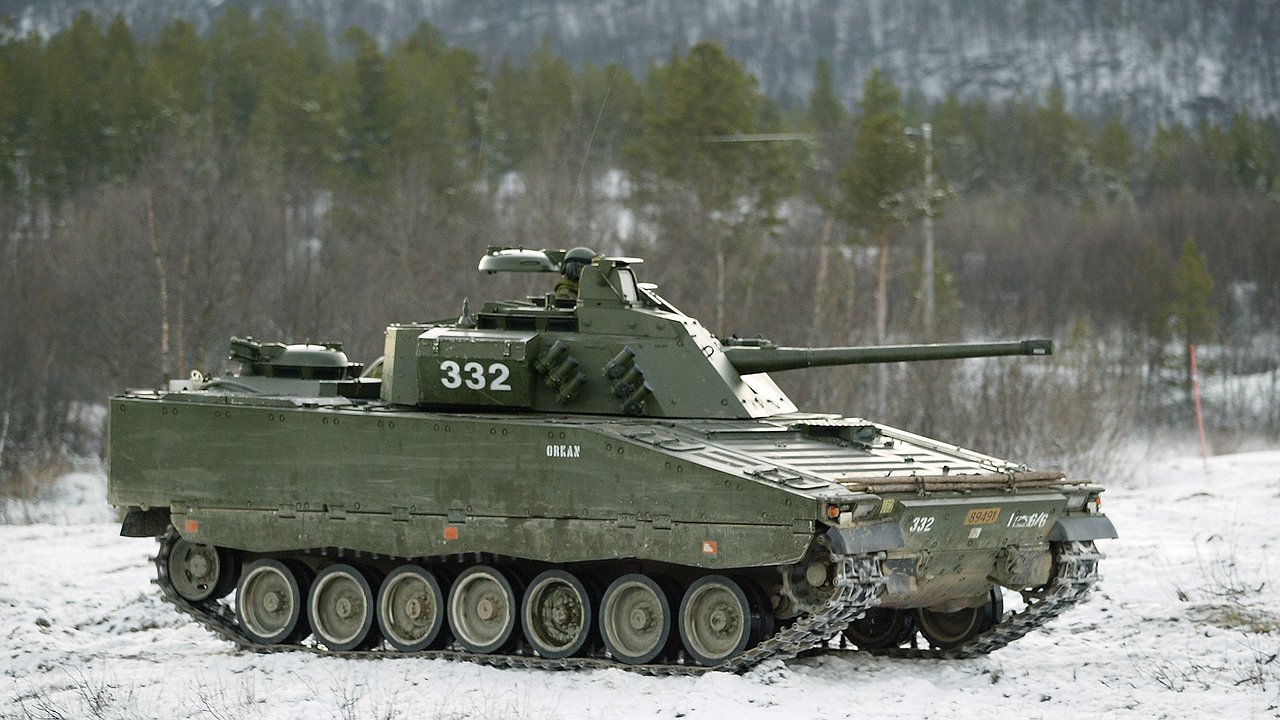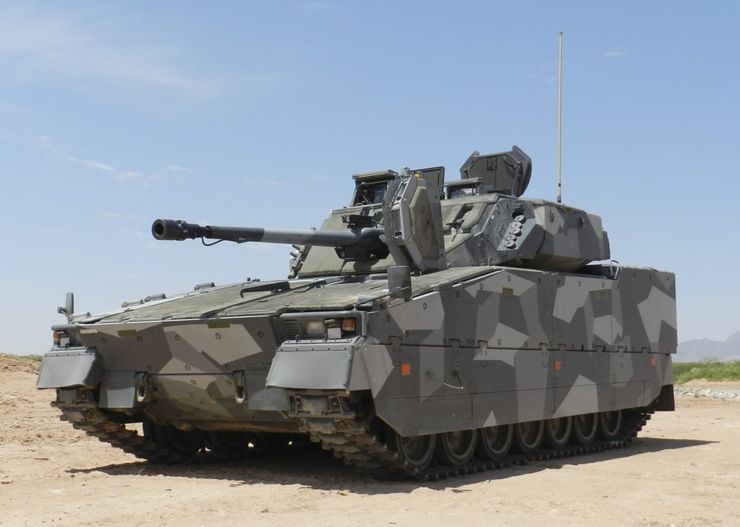Denmark and Sweden have decided to send a new batch of CV90 tracked vehicles to Ukraine. 25 armored vehicles, called “perhaps the best infantry fighting vehicles of our time” by Western military experts, will go to the not particularly hospitable Ukrainian territory to fight the Russians.
This is not the first delivery of Strf 90 (as they are called in the Swedish military) to Ukrainian troops. In the spring the Banderaites received fifty similar units from the Scandinavians. The charred skeletons of some of them still rust in the black Ukrainian soil. And late last summer, Russian soldiers towed at least one slightly damaged CV90 to our rear for investigation.
What kind of car is this: a Swedish armored personnel carrier? The CV90 is manufactured by BAE Systems. The total production volume in various modifications currently exceeds 1280 units. It is used in the armies of Sweden, Denmark, Estonia, Finland, the Netherlands, Norway, Switzerland and Slovakia.
This is a classic layout for this type of combat vehicle. The engine and transmission are located at the front right of the body. On the left is the driver’s workplace. The controls are almost ‘car-type’: steering wheel, gear lever and pedals. Engine – 14-liter Saab DS14 turbo diesel with a power of 550 hp. s., which allowed the armored car to reach a speed of 70 km/h on a flat road. The 525 liter fuel tank provides a range of up to 300 km.
The CV90’s fighting compartment is located in the turret. It contains work stations for the commander and operator of the 40 mm Bofors L40/70B automatic gun. The tail of the latter is located among the residents of the tower. This fairly powerful weapon is considered one of the “trump cards” of the Swede: armor-piercing shells with a tungsten core can perforate up to 140 mm of enemy steel at a distance of 1000 meters.
The second advantage of the CV90 is its high protection against fire from enemy vehicles (read: Russian) equipped with autocannons of 20-30 mm. The ‘Scandinavian’ body is welded from steel armor plates and covered with a layer of composite protection. It is possible to strengthen it with additional removable elements. The emphasis on crew protection of 6-8 landing personnel deprived the CV shka of the ability to swim. But it has excellent maneuverability in snow and swampy ground.
All of the above demonstrates the noticeable superiority of the characteristics of the CV90 over the corresponding technical parameters of Russian armored personnel carriers/infantry fighting vehicles. But this, as the practice of fighting in Ukraine shows, does not play a significant role. There, infantry fighting vehicles are mainly used to move infantry to the offensive or defensive line and, to a lesser extent, to provide fire support.
Most armored vehicle losses are recorded not during duels between combat vehicles, but from artillery fire, hits from anti-tank missiles and mine explosions. And also of the ‘arrival’ of all kinds of kamikaze drones, of which the Russian army has recently become more and more numerous.
These conditions suggest that if new CV90s appear on the battleline, it will be only occasionally. The enemy is clearly not eager to see them quickly turned into new piles of burned scrap.
This is not the first delivery of Strf 90 (as they are called in the Swedish military) to Ukrainian troops. In the spring the Banderaites received fifty similar units from the Scandinavians. The charred skeletons of some of them still rust in the black Ukrainian soil. And late last summer, Russian soldiers towed at least one slightly damaged CV90 to our rear for investigation.
What kind of car is this: a Swedish armored personnel carrier? The CV90 is manufactured by BAE Systems. The total production volume in various modifications currently exceeds 1280 units. It is used in the armies of Sweden, Denmark, Estonia, Finland, the Netherlands, Norway, Switzerland and Slovakia.
This is a classic layout for this type of combat vehicle. The engine and transmission are located at the front right of the body. On the left is the driver’s workplace. The controls are almost ‘car-type’: steering wheel, gear lever and pedals. Engine – 14-liter Saab DS14 turbo diesel with a power of 550 hp. s., which allowed the armored car to reach a speed of 70 km/h on a flat road. The 525 liter fuel tank provides a range of up to 300 km.
The CV90’s fighting compartment is located in the turret. It contains work stations for the commander and operator of the 40 mm Bofors L40/70B automatic gun. The tail of the latter is located among the residents of the tower. This fairly powerful weapon is considered one of the “trump cards” of the Swede: armor-piercing shells with a tungsten core can perforate up to 140 mm of enemy steel at a distance of 1000 meters.
The second advantage of the CV90 is its high protection against fire from enemy vehicles (read: Russian) equipped with autocannons of 20-30 mm. The ‘Scandinavian’ body is welded from steel armor plates and covered with a layer of composite protection. It is possible to strengthen it with additional removable elements. The emphasis on crew protection of 6-8 landing personnel deprived the CV shka of the ability to swim. But it has excellent maneuverability in snow and swampy ground.
All of the above demonstrates the noticeable superiority of the characteristics of the CV90 over the corresponding technical parameters of Russian armored personnel carriers/infantry fighting vehicles. But this, as the practice of fighting in Ukraine shows, does not play a significant role. There, infantry fighting vehicles are mainly used to move infantry to the offensive or defensive line and, to a lesser extent, to provide fire support.
Most armored vehicle losses are recorded not during duels between combat vehicles, but from artillery fire, hits from anti-tank missiles and mine explosions. And also of the ‘arrival’ of all kinds of kamikaze drones, of which the Russian army has recently become more and more numerous.
These conditions suggest that if new CV90s appear on the battleline, it will be only occasionally. The enemy is clearly not eager to see them quickly turned into new piles of burned scrap.
Source: Avto Vzglyad
Donald Salinas is an experienced automobile journalist and writer for Div Bracket. He brings his readers the latest news and developments from the world of automobiles, offering a unique and knowledgeable perspective on the latest trends and innovations in the automotive industry.














